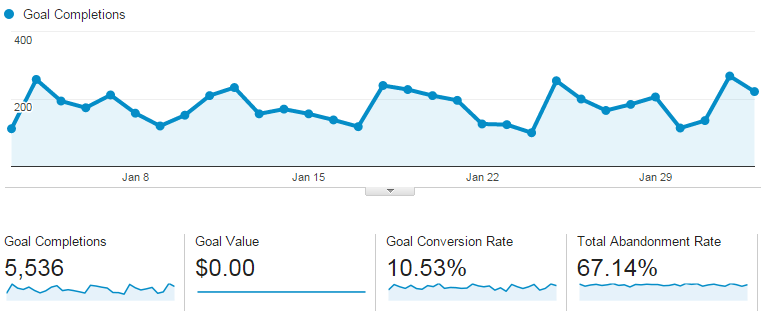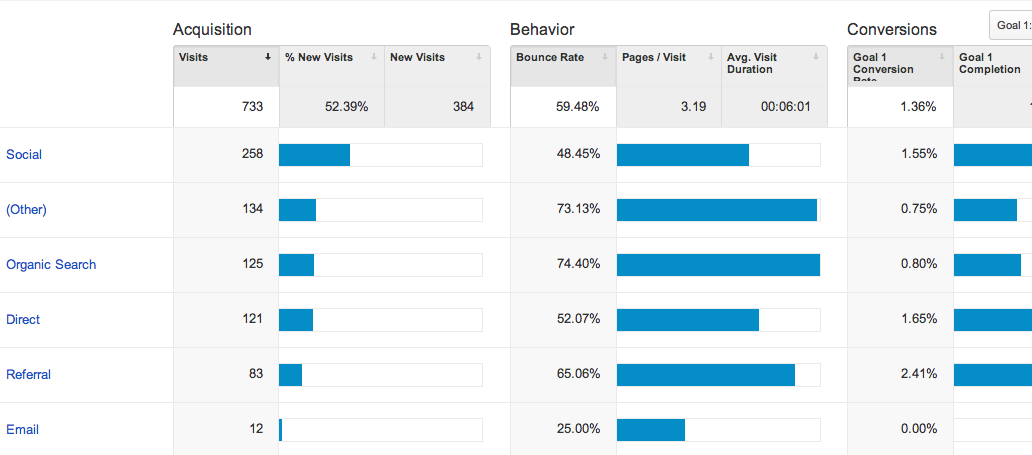What Data Is Google Analytics Goals Unable to Track and Why
What Data Is Google Analytics Goals Unable to Track and Why
Blog Article
Debunking Google Analytics Limitations: Discover What Information Goals Can not Track
In the world of digital analytics, Google Analytics stands as an effective tool that supplies important understandings right into site performance and individual actions. In the middle of its capabilities, there exist constraints that typically go undetected. Comprehending what Google Analytics can not track is essential for a comprehensive grasp of data analysis and decision-making processes. From the ins and outs of user communication with vibrant content to the complexities of cross-device individual trips, these constraints dropped light on areas that may continue to be covered from conventional analytics viewpoints. By unraveling these constraints, a clearer picture arises, allowing for even more informed techniques and refined insights right into user involvement and conversions.

User Communication With Dynamic Content
Individual communication with dynamic web content plays a critical role in understanding individual habits on websites and enhancing the total customer experience. Dynamic content describes aspects on a web page that can change without the need for a complete page reload. This includes interactive components such as pop-ups, sliders, forms, and videos that reply to user activities in real-time. By tracking user communications with vibrant web content, site proprietors can get useful understandings right into individual involvement, preferences, and behaviors.
Google Analytics uses different tools to track customer interactions with dynamic content, such as occasion tracking and digital pageviews. Event monitoring allows you to keep an eye on certain individual activities, like clicking a button or enjoying a video, providing data on exactly how customers engage with vibrant elements. Online pageviews can be made use of to track interactions that do not result in a new page tons, offering a detailed view of individual involvement with dynamic material. By examining this data, web site proprietors can make informed decisions to enhance user experience and drive conversions.
Cross-Device User Journeys
Just how can modern-day analytics devices track the complex courses individuals take across numerous devices in their on-line journeys? Cross-device individual trips offer a substantial difficulty for monitoring and analyzing user behavior accurately. As users connect with web sites or applications using various tools such as mobile phones, desktops, and tablet computers, it ends up being vital to comprehend just how they move in between these platforms to optimize user experience properly.
Google Analytics encounters limitations in tracking cross-device individual journeys as a result of personal privacy problems and technical restraints - what data is google analytics goals unable to track. While it can offer understandings right into individual tools' interactions, tracking a seamless user trip across multiple tools remains a challenge. This constraint can lead to incomplete data and fragmented individual understandings, making it hard for businesses to produce a unified view of the customer journey
To address this issue, businesses can use advanced analytics devices that use cross-device monitoring capabilities, allowing them to get an extra holistic understanding of customer habits. By leveraging these tools, companies can bridge the void in tracking cross-device individual trips and enhance their electronic techniques for a seamless user experience.
Offline Conversions and Acknowledgment
As companies browse the obstacles of tracking cross-device customer trips, another essential facet to think about is the world of offline conversions and attribution in the realm of information analytics. While Google Analytics gives valuable understandings into on the internet user habits, it fails when it involves tracking conversions that occur offline. This constraint positions a considerable difficulty see this for organizations that have both online and offline sales networks.
Offline conversions, such as acquisitions made in physical stores or via call centers, are necessary to understanding the total consumer trip. Without the capability to attribute these offline conversions to particular online interactions, services may have a hard time to properly measure the influence of their electronic marketing initiatives.
To resolve this gap, businesses can explore alternate services such as incorporating CRM systems with on the internet analytics devices or using unique coupon codes that can be mapped back to on the internet campaigns. By bridging the space in between online and offline information, businesses can get a more comprehensive understanding of their clients' habits and enhance their general advertising and marketing techniques.
Individual Customer Recognition
In the world of information analytics, the capability to properly determine individual customers across different online touchpoints is a crucial obstacle for businesses looking for to individualize and enhance their marketing approaches. While Google Analytics provides important insights into user actions and interactions, it drops brief in allowing the recognition of specific people because of personal privacy worries and technological restrictions. Google Analytics uses one-of-a-kind identifiers such as cookies to track user sessions and actions, but these do not relate to determining specific customers in an individual feeling.

Data From Secure Pages
Despite the boosting frequency of safe web pages on internet sites, obtaining information from these encrypted sources presents an one-of-a-kind difficulty for electronic analytics platforms like Google Analytics. Secure pages, indicated by HTTPS in the URL, encrypt data exchanged in between the customer's web browser and the web site's server to guarantee personal privacy and protection. While this file encryption is crucial for securing sensitive details, it also presents constraints for tracking individual habits and event analytics information.
Google Analytics encounters obstacles in collecting in-depth details from secure pages because of the encryption methods in position. Because of this, certain information points such as recommendation sources, keyword searches, and also some customer communications might not be totally captured when individuals access an internet site through a protected link. This restriction can affect the accuracy and efficiency of the data evaluation, leading to gaps in understanding individual actions and preferences on secure pages.
To browse this obstacle, electronic analysts might require to check out alternate monitoring techniques or take advantage of various other devices particularly developed to gather insights from safe web pages. By adjusting techniques to fit these limitations, organizations can still acquire useful analytics regardless of the restraints provided by encrypted links.
Conclusion
Finally, Google Analytics has limitations in tracking user interaction with vibrant content, cross-device customer journeys, offline conversions, specific customer recognition, and data from safe and secure pages. These restrictions impede a thorough understanding of customer habits and might lead to gaps in information analysis. In spite of its useful understandings, Google Analytics might not provide a complete image of user engagement throughout numerous touchpoints. It is essential for businesses to be conscious of these restrictions and take into consideration supplemental tools for a more all natural view of their information.
Individual communication with vibrant content plays an essential role in understanding customer actions on internet sites and visit site optimizing the total customer experience. By tracking customer interactions with vibrant material, website owners can gain beneficial insights into user involvement, choices, and behaviors.
Google Analytics makes use of distinct identifiers such as cookies to track individual sessions and actions, however these do not correspond to recognizing private users in an individual feeling.
As a result, specific data points such as recommendation sources, keyword searches, and also some customer communications might not be completely caught when individuals access a web site via a secure link.In final thought, Google Analytics has limitations in tracking individual communication with vibrant content, cross-device individual trips, offline conversions, specific customer recognition, and data from secure web pages.
Report this page